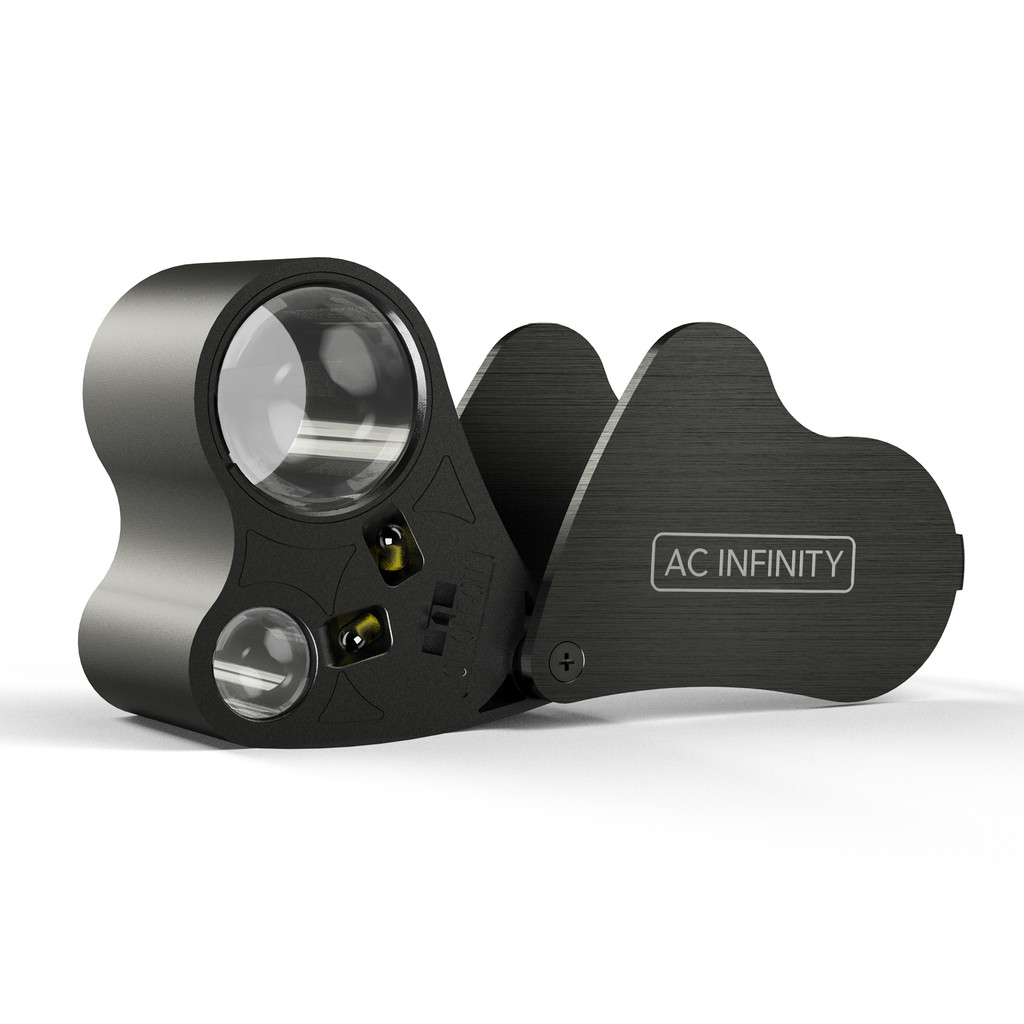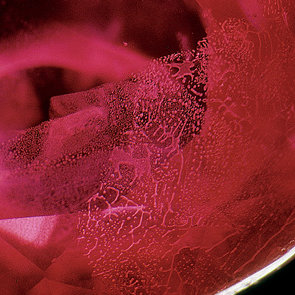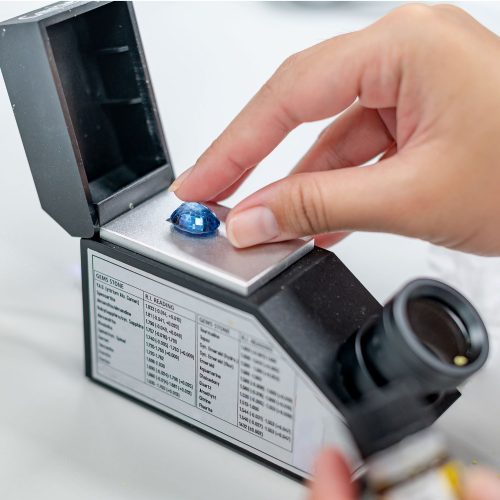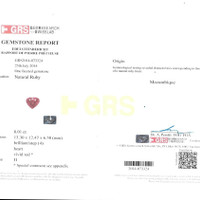Ruby Gem Testing Methods
Determining the authenticity and quality of a ruby requires a combination of Ruby Gem Testing Methods. These tests help differentiate natural rubies from synthetics and identify treatments such as heat treatment, oiling, and fracture filling. Laboratories and expert gemologists use advanced techniques to ensure accurate grading and certification.

1. Visual Inspection & Magnification
One of the first steps in ruby testing is visual examination under magnification to assess clarity, inclusions, and signs of treatments.
Tools Used:
- Jeweler’s Loupe (10x Magnification): Basic tool for examining inclusions and surface features.
- Microscope (30x–100x Magnification): Provides detailed views of inclusions and potential enhancements.


What It Detects:
- Silk Inclusions: Natural rutile needles indicate an untreated ruby.
- Flux Residue: Signs of flux healing appear as golden or whitish deposits in fractures.
- Air Bubbles: Tiny bubbles inside a ruby suggest lead-glass filling.
- Surface Polish Differences: Oil-treated rubies may have an uneven polish in fractures.




2. Refractometer – Measuring Refractive Index (RI)
The refractive index (RI) measures how light bends as it passes through a ruby, helping differentiate it from imitations or other red gemstones.

Typical Ruby RI Range:
- Natural Ruby: 1.760 – 1.770
- Synthetic Ruby: 1.760 – 1.770 (Identical to natural, so additional tests are needed)
- Red Spinel: 1.710 – 1.735 (Lower than ruby)
- Garnet: 1.730 – 1.765 (Similar but lacks ruby’s birefringence)
3. Spectroscope – Identifying Light Absorption Patterns
A gemological spectroscope helps identify a ruby’s unique absorption spectrum, which can reveal its authenticity and treatment.
What It Detects:
- Iron Absorption Lines: Found in rubies from Thailand and Cambodia, which contain higher iron levels.
- Chromium Absorption Bands: Strong absorption in the green-yellow spectrum is typical for natural rubies.
- Synthetic Ruby Patterns: May show unnatural fluorescence or missing absorption features.

4. UV Fluorescence – Testing for Natural vs. Synthetic Rubies
Under ultraviolet (UV) light, rubies exhibit different fluorescence levels based on origin and treatment.
Fluorescence Observations:
- Strong Red Fluorescence: Common in Burmese rubies due to low iron content.
- Weaker Fluorescence: Found in Thai and Cambodian rubies, which contain more iron.
- Lead-Glass-Filled Rubies: May show inconsistent or patchy fluorescence.

5. Dichroscope – Checking Pleochroism
A dichroscope tests for pleochroism, the ability of a gemstone to display different colors from different angles.
Natural Ruby Pleochroism:

- Red to Purplish-Red: Expected in genuine rubies.
- Lack of Pleochroism: May indicate a synthetic or glass-filled ruby.
6. Specific Gravity Test – Measuring Density
Rubies have a specific gravity of 3.97 – 4.05, distinguishing them from similar-looking stones like red spinel or garnet.
How It Works:
- The gemstone is weighed in air and then in water.
- The difference in weight determines the specific gravity, confirming if the stone is a ruby or another material.

7. Advanced Laboratory Testing Methods
A. Raman Spectroscopy – Identifying Mineral Composition
- Uses laser light to analyze a ruby’s chemical structure.
- Confirms if a ruby is natural or synthetic.

B. FTIR Spectroscopy – Detecting Heat Treatment
- Uses infrared absorption to reveal whether a ruby has been heat-treated.
- Heat-treated rubies show distinctive spectral changes.

C. EDXRF (Energy Dispersive X-Ray Fluorescence) – Elemental Analysis
- Identifies the presence of beryllium, lead, or iron, which helps detect treatments such as beryllium diffusion and lead-glass filling.

8. Certification from Gemological Laboratories
After testing, reputable gemological laboratories issue certificates verifying a ruby’s authenticity, treatments, and origin.
Leading Gem Labs for Ruby Certification:
- GIA (Gemological Institute of America)
- AGL (American Gemological Laboratories)
- SSEF (Swiss Gemological Institute)
- GRS (Gem Research Swisslab)


Conclusion
Understanding Ruby Gem Testing Methods is essential for distinguishing between natural, treated, and synthetic rubies. While basic tools like a loupe and microscope provide clues, advanced tests such as UV fluorescence, spectroscopy, and Raman analysis offer definitive results. Buyers should always request a gem lab certification to ensure transparency in their ruby purchases.
For more details, visit Visual Clues for Treated Rubies to learn how to identify enhancements in ruby gemstones!
